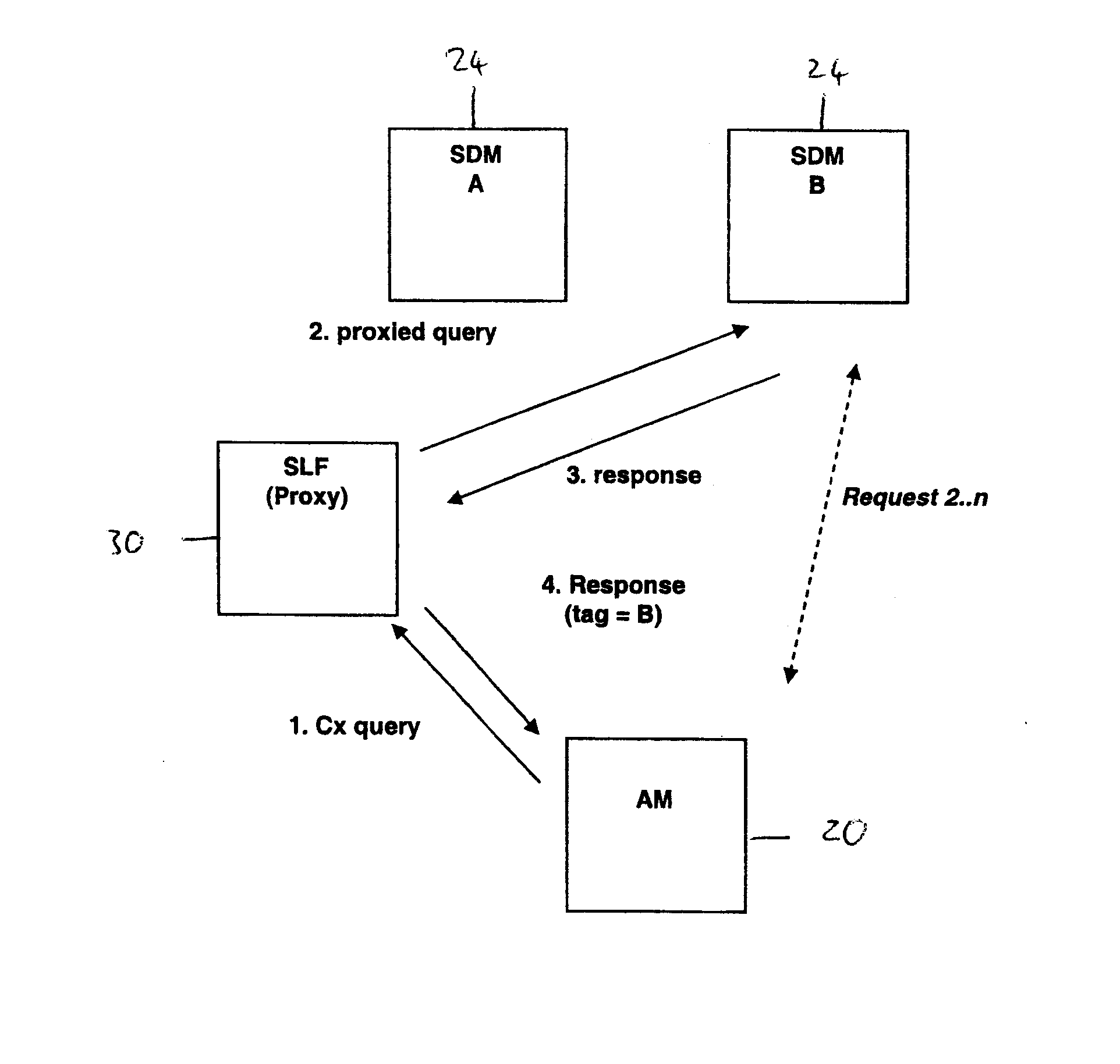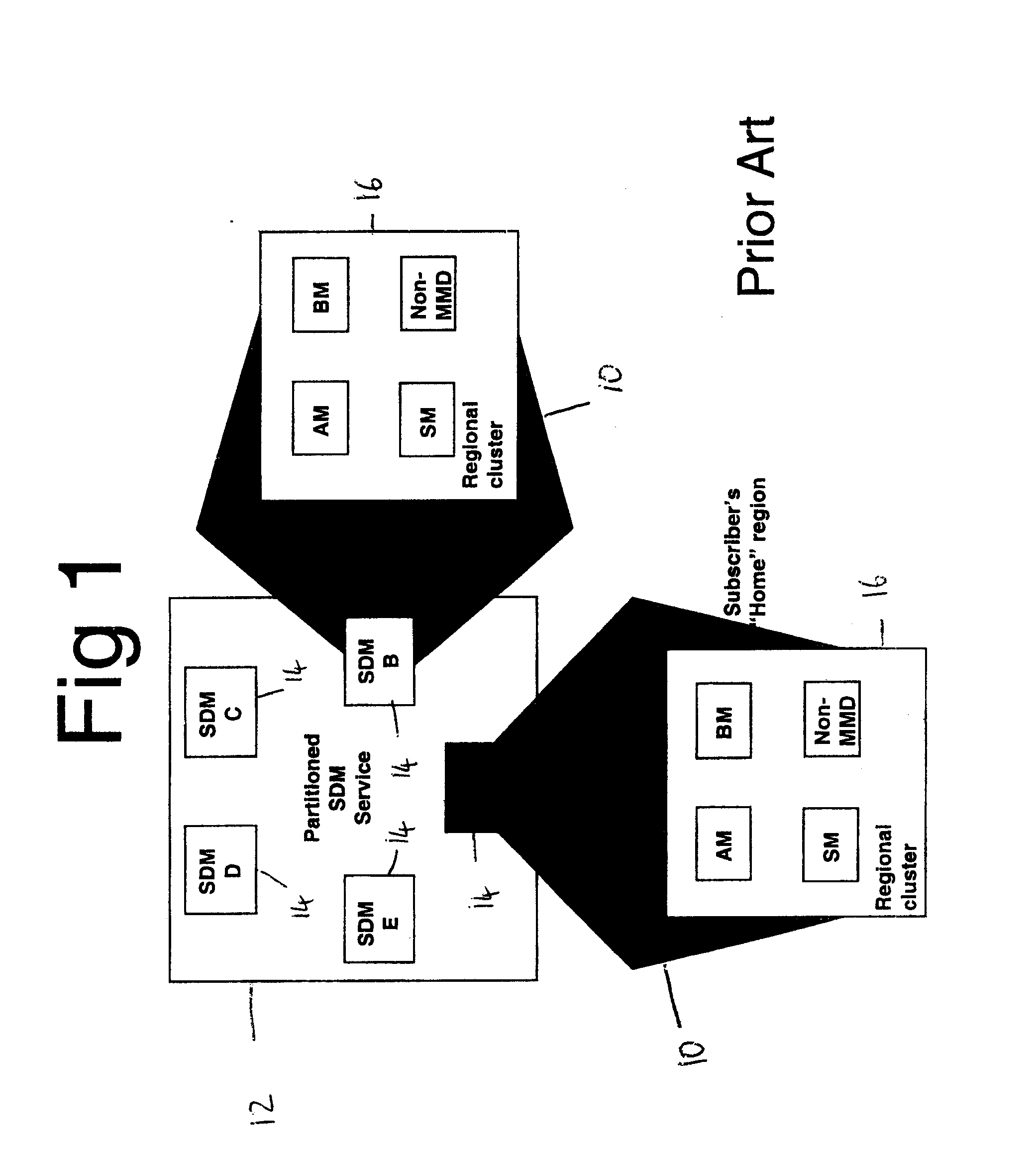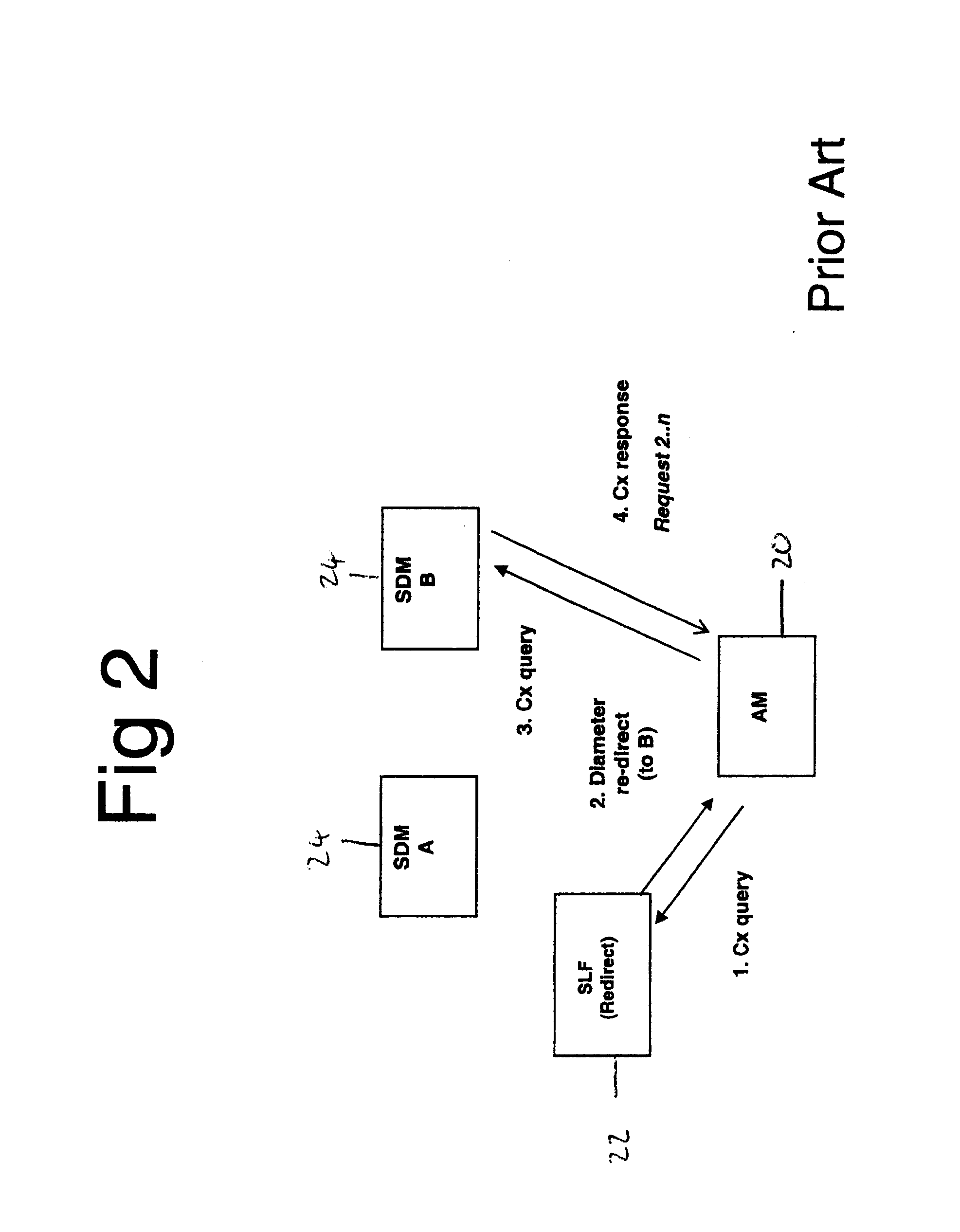Adaptable Network Service Access Through Dynamic Request Routing
a network service and dynamic request technology, applied in the field of adaptable network service access through dynamic request routing, can solve the problems of home sdm change for a subscriber, network complexity can be a problem, and the slf approach used in the present ims standard suffers from certain drawbacks, so as to reduce the number of discrete elements and reduce the complexity of the network
- Summary
- Abstract
- Description
- Claims
- Application Information
AI Technical Summary
Benefits of technology
Problems solved by technology
Method used
Image
Examples
Embodiment Construction
[0030] Embodiments of the present invention are described below by way of example only. These examples represent the best ways of putting the invention into practice that are currently known to the Applicant although they are not the only ways in which this could be achieved.
[0031]FIG. 3 shows the placement options for a proxy SLF 30 for each geographic region according to the present invention. There are four options: 1) network level placement; 2) co-located with the SDM; 3) regional level placement and 4) co-located with each network element.
[0032] Placement needs to address two key issues. Network element query latency and data management complexity associated with keeping SLF data in sync with SDM data distribution.
[0033] The preferred option is to co-locate the SLF with the SDM (option 2) for the following reasons. Co-locating the SLF with the SDM enables the SLF to use the same data management infrastructure, sharing data, robustness and redundancy mechanisms used by other...
PUM
 Login to View More
Login to View More Abstract
Description
Claims
Application Information
 Login to View More
Login to View More - R&D
- Intellectual Property
- Life Sciences
- Materials
- Tech Scout
- Unparalleled Data Quality
- Higher Quality Content
- 60% Fewer Hallucinations
Browse by: Latest US Patents, China's latest patents, Technical Efficacy Thesaurus, Application Domain, Technology Topic, Popular Technical Reports.
© 2025 PatSnap. All rights reserved.Legal|Privacy policy|Modern Slavery Act Transparency Statement|Sitemap|About US| Contact US: help@patsnap.com



